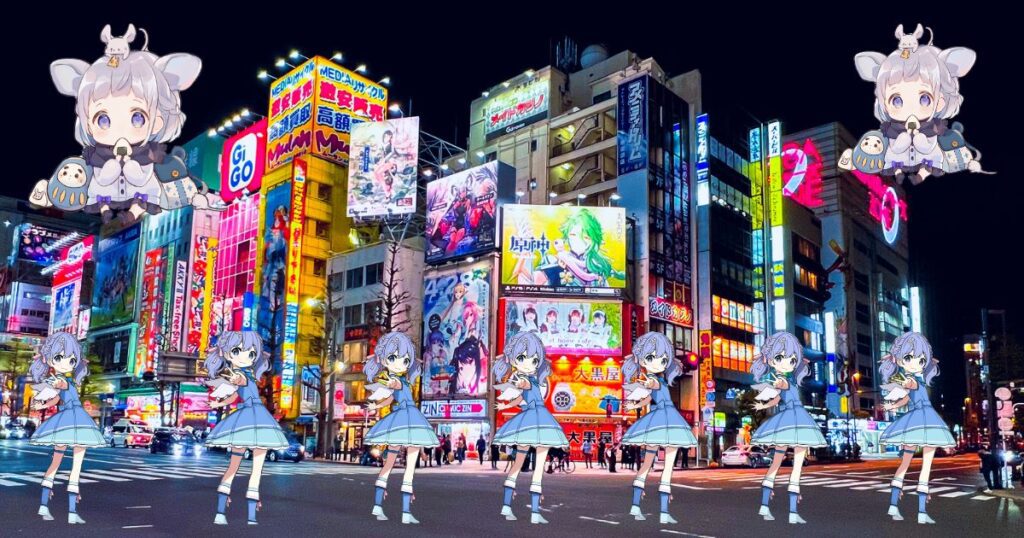Tucked within the vast and pulsating landscape of Tokyo, Japan, lies a district that has carved a unique niche for itself: Akihabara Electric Town. A radiant world where pop culture, tech, and a vibrant shopping district intersect, Akihabara – or as it’s colloquially known, ‘Akiba’ – stands as a colorful illustration of Japan’s unique blend of tradition and innovation.
Table of Contents
History:
Let’s take a step back in time to 1869. Tokyo had just suffered a massive fire. To protect the city, locals built the Akiba Shrine. This shrine gave its name to the area around it – Akihabara.
Akihabara began as a small town that sold wood. It also became a key distribution point in Tokyo due to its large train station. Then, in the 1990s, things changed. Akihabara turned into one of the first places in Japan to specialize in electronics.
By the early 2000s, Akihabara began to change again. This time, it started to embrace ‘Otaku Culture‘ – a community passionate about anime and manga. This change has made Akihabara the unique, exciting neighborhood it is today, a heartland of Japanese pop culture. But most people know it as Akihabara Electric Town.
Otaku Heaven: Anime, Manga, and Gaming Galore:
No mention of Akihabara is complete without an acknowledgment of its global reputation as the epicenter of Otaku culture. The Otaku phenomenon, a term referring to fervent enthusiasts of anime, manga, video games, and the like, has put Akihabara on the map.
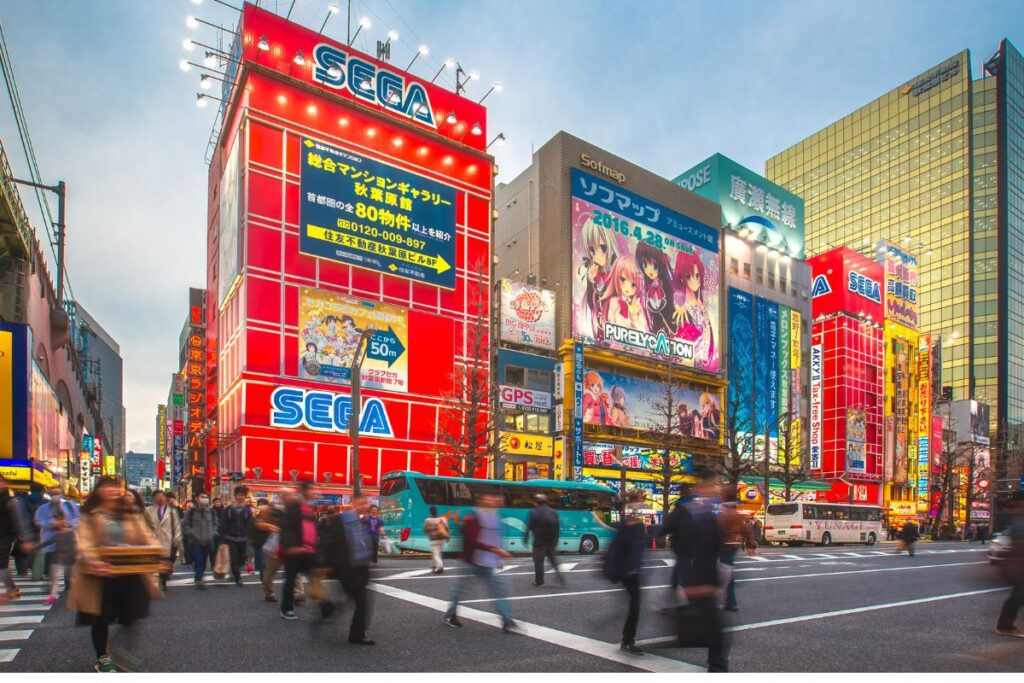
Anime and manga lovers are spoiled for choice here, with stores like the Tokyo Anime Center offering a veritable trove of collectibles, light novels, figurines, and more. The district is also home to the world’s largest anime store, Animate, providing an immersive experience for fans.
Video games, too, are central to the district’s appeal, attracting both casual and hard-core gamers. Shops like Super Potato and the several SEGA Arcades are a paradise for retro gaming enthusiasts, offering titles from every era of gaming history. But it’s not just about the classics. State-of-the-art VR Zones bring the latest technology to the fore, letting visitors experience the future of interactive entertainment.
Technophiles’ Paradise:
Akihabara’s fame isn’t just rooted in its pop culture dominance but its role as Tokyo’s Electronics Town as well. From the newest tech gadgets and PC components to second-hand devices and rare electronic parts, Akihabara is a tech hub that’s sure to satisfy even the most discerning tech enthusiasts.
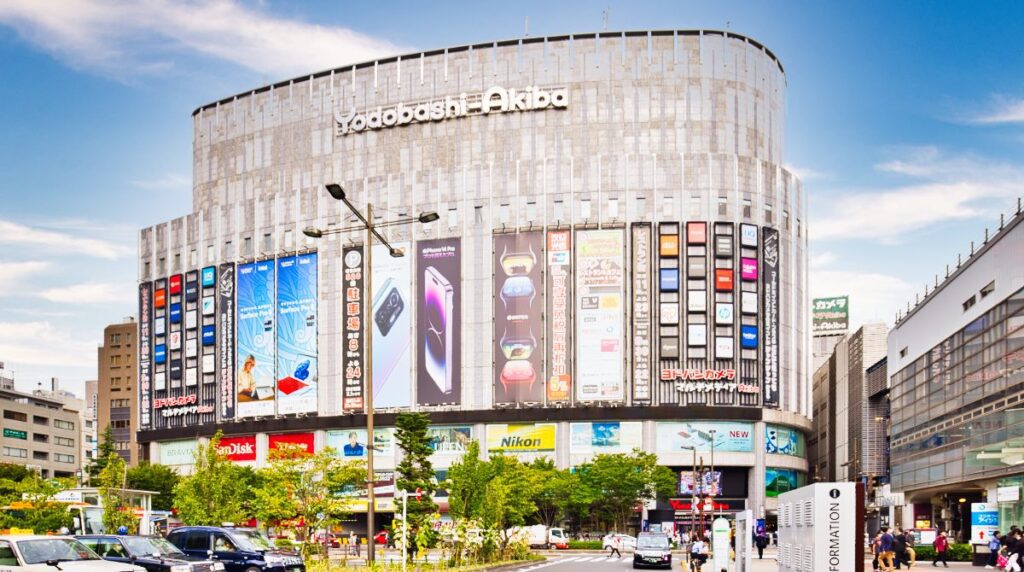
Major Japanese Akihabara Electric Town stores, such as Yodobashi Camera and Tsukumo Robot Kingdom, hold court alongside niche hobby shops, making Akihabara a playground for all things tech.
Maid Cafes & Idol Groups: Japanese Pop Culture Town:
Adding to the district’s colorful personality is its array of themed cafes. Maid Cafes, where waitresses dress in maid costumes and treat customers as masters and mistresses, add a unique flavor to the area’s dining scene. Gundam Cafe, a must-visit for fans of the popular anime series, delivers a themed dining experience that’s out of this world.
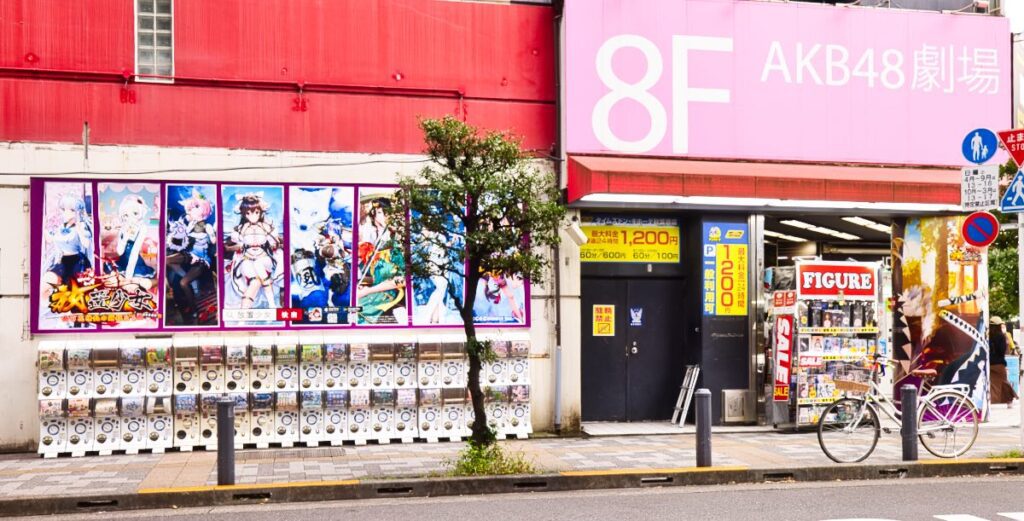
Akihabara is also home to idol groups like AKB48, a crucial aspect of J-Pop culture. With regular performances at their dedicated theater, it’s no surprise that Akihabara has become a hotspot for music lovers.
Moreover, cute waitresses wait for customers in the streets wearing anime kawaii dresses and deliver their shop and store leaflets.
A Shopper’s Delight:
Step into the bustling Chuo Dori, Akihabara’s vibrant main street, or meander through the intriguing aisles of Don Quijote Akihabara. This area is a shopper’s paradise, providing an array of products and experiences that make for a memorable retail adventure.
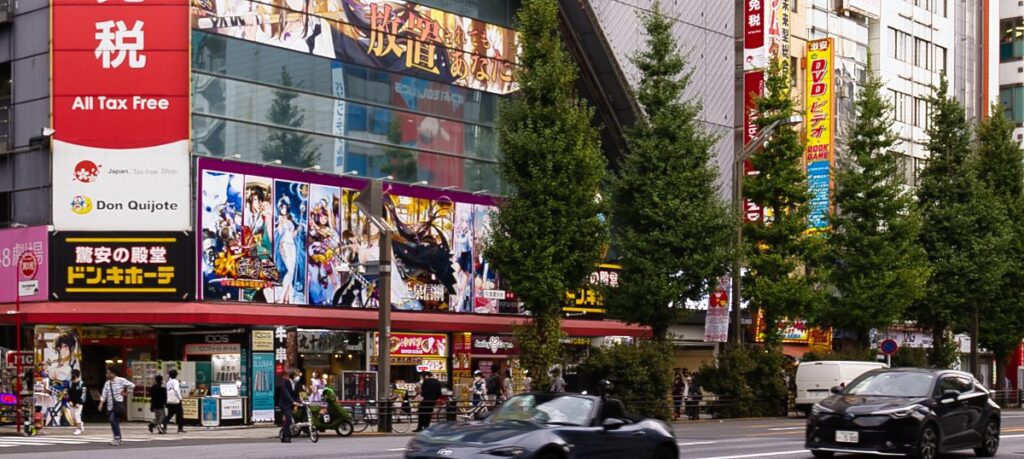
Dive into the whimsical world of vending machine-dispensed capsule toys, known as Gachapon, a popular trend that has swept across Japan. Or, take the time to explore Doujinshi, self-published works that cover various genres, from manga to novels. Renowned establishments like the Radio Kaikan building are known to house an expansive collection of these intriguing works.
A Bridge Between the Past and Future:
Despite its modern façade, Akihabara doesn’t forget its roots. The historical Kanda Shrine, a stone’s throw away from the district’s electronic shops and anime stores, serves as a serene reminder of Tokyo’s rich history.
Simultaneously, initiatives like the Akihabara Crossfield project show its commitment to fostering advanced technological research and development, further solidifying Akihabara as a bridge between tradition and the cutting edge.
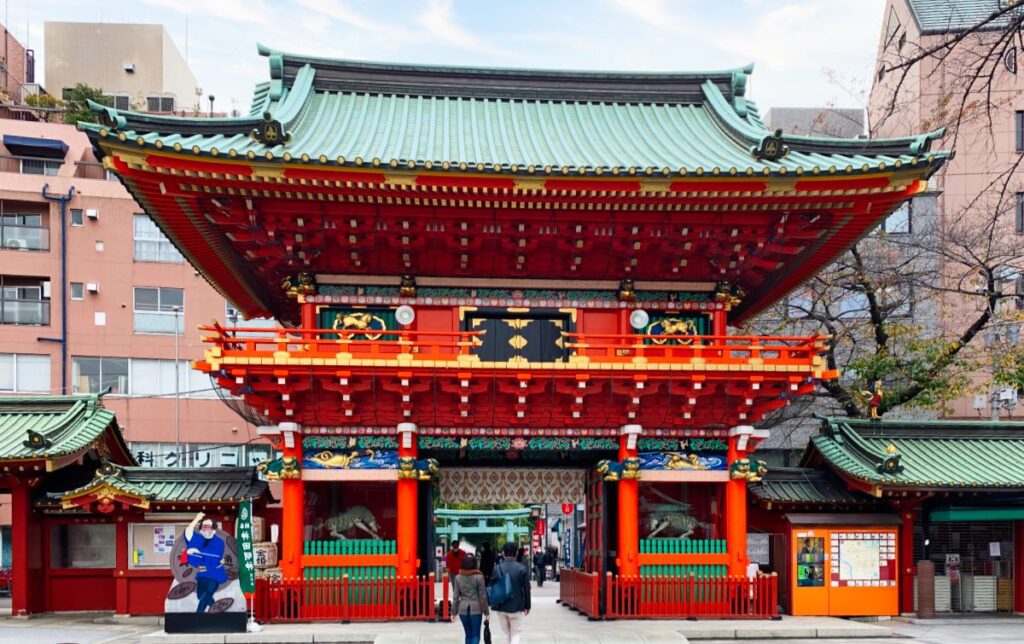
There’s truly no other place like Akihabara. A unique blend of the modern and the traditional, the mainstream and the niche, all set against a backdrop of neon lights and towering skyscrapers, it’s no wonder Akihabara Electric Town enjoys such enduring fame.
Whether you’re an anime fan, a tech enthusiast, a gamer, a foodie, or a lover of Japanese culture, Akihabara has something to offer you. And it’s all accessible via the JR Yamanote Line’s Akihabara Station, making this vibrant district an essential part of any Tokyo itinerary.
Steeped in a rich blend of culture and technology, Akihabara doesn’t just illuminate Tokyo – it illuminates the world, one colorful neon light at a time.
How to access it?
Akihabara is easily accessible via several train and subway lines in Tokyo, making it a convenient destination for both local residents and international tourists.
Here are the primary ways to get to Akihabara:
1. Akihabara Station:
The main station directly serves the Akihabara area. This station is on several lines:
- JR Yamanote Line: This is the city’s main loop line, connecting many of Tokyo’s major areas.
- JR Keihin-Tohoku Line: This line runs parallel to the Yamanote Line on the eastern half of the city.
- JR Sobu Line: This line crosses the Yamanote loop from Chiba to Shinjuku. Visitors direct can access Akihabara from Shinjuku by this line.
- Tsukuba Express Line: Connects Tokyo to the Tsukuba Science City in Ibaraki Prefecture.
2. Suehirocho Station:
This station on the Tokyo Metro Ginza Line is located at the northern end of the Akihabara district. It’s a convenient access point for visitors from areas like Ueno, Ginza, or Shibuya.
3. Ochanomizu Station:
On the JR Chuo (Rapid) Line and Marunouchi Subway Line, this station is just one stop from Akihabara Station and a short walk away.
4. Iwamotocho Station:
Located on the Toei Shinjuku Line, this station is also a short walk from the main Akihabara area.
You can easily visit Akihabara Electric Town in your Tokyo itinerary by leveraging these multiple access points, whether based in the city or from a neighboring area.
Note: If you’re new in Tokyo and without a Tour Guide, getting off at Akihabara Station is advisable.
Check the Tickets below:
